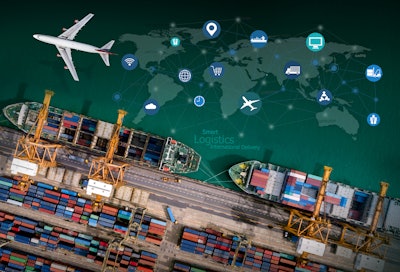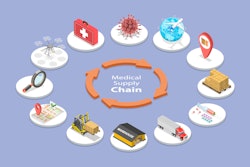
Major events this decade have repeatedly created unprecedented challenges for the supply chain. Geopolitical conflicts, COVID-19, extreme weather and widely changing demand have all had negative — and, at times, catastrophic — effects on lead times, logistics and an enterprise’s ability to meet SLAs.
However, supply chain slowdowns and general uncertainty can often be an opportunity. In fact, for today’s forward-looking businesses, they can represent a chance to gain a significant edge. How? It starts with careful analysis of current business planning processes and thorough exploration of digital technologies that can help improve them, leading to increased agility, resilience and cost-effectiveness.
Truly gaining this edge depends on two primary factors: Data insights and decision-making processes.
Understanding Real-Time Supply Chain Data
Whether the supply chain is operating in 2019’s “normal” or reacting to today’s ebbs and flows, businesses need a way to understand what’s occurring in real time in their industry. News and analyst reports can give you a rundown of what has happened, but they’re typically not filled with information that’s valuable for planning. A more effective way to gain visibility is to collect and analyze data for a live view, including current demand, production schedules, shipment status and timelines for delivery. Enterprises can use these data insights to inform decisions on which suppliers can deliver at the best price and on schedule, whether processes are optimized and where waste occurs. Analyzing data can also reveal demand for a company’s products or services, helping managers align employee or contractor schedules with production and ensure enough safety stock is available to keep production running if the supply chain slows.
Predictive, rather than reactive, insights fuel planning that enables an enterprise to align its supply chains with true demand for its products or services. Furthermore, visibility into activities throughout the supply chain and insight into how to accelerate operations will give a business an edge over competitors attempting decision making based on traditional planning processes.
Enterprises must remember that to gain advantages, their systems need proper data inputs. It’s necessary to break down silos and build a data stream that provides all the information necessary, such as e-commerce or store data, current stock and inventory counts, production schedules, shipment locations, costs and more, to allow for effective and cost-efficient execution of plans.
Simplifying Decision Making
Once an enterprise has data insights that can improve forecasting and planning, it has to make the best use of them. However, the challenges of the 2020s include labor shortages at all levels of the org chart, requiring fewer people to take on responsibility once managed by larger teams. As a result, companies are automating processes throughout the supply chain so operations can continue smoothly.
Now that operations have returned more closely to pre-pandemic levels, enterprises need to take the opportunity to create connected systems and automate processes so they can adapt when circumstances change and meet demand most efficiently. It’s more than a matter of business continuity, although that is an important consideration. It’s reengineering processes for greater efficiency, profitability and competitiveness at any time.
Moving Forward with Integrated Business Planning
Bringing together improved data insights with more efficient decision making is key to integrated business planning and, in turn, resilience and agility. You’ll be able to stand tall regardless of whether factors — internal or external — are impacting the supply chain. It also allows enterprises to identify and correct bottlenecks, gaps and waste that are standing in the way of their customer service, financial and sustainability goals. Integrated planning goes one step further than synchronized planning, taking the process to the most strategic level by showing enterprises what they will sell throughout the current year and cascading down to what they’ll sell today.
Executing integrated business planning successfully requires an investment in technology, such as a digital twin of the supply chain network. The digital twin represents the entire physical supply chain, providing real-time visibility and allowing the enterprise to consider causal factors to see their impact on shipping and production. Evaluating the outcomes in a virtual environment enables physical operations to continue while the digital twin uncovers trends and makes predictions that can prepare an organization for contingencies.
In addition, enterprises can implement machine learning to analyze large volumes of data and spot patterns and deviations in production and supply chain planning. Enterprises will also find value in a continuous planning framework that uses data from the network digital twin for replanning and autonomous decision making — no intervention from managers required. These systems allow enterprises to plan more effectively, taking real-world conditions into account and enhancing safety-stock recommendations in order to avoid production delays and costly overstocks.
Although transitioning to integrated business planning requires the right technology and data, it also takes organizational and cultural change. Business leaders must reimagine their approach to planning and discern where automation will most benefit their operations. They must also work with supply chain partners to ensure real-time access to critical data for informed decision making.
When enterprises leverage data and automation in an integrated business planning framework, they can move past the limitations of traditional planning methods, rise to overcome challenges in their industries and prepare to meet future challenges head-on.




![Pros To Know 2026 [color]](https://img.sdcexec.com/mindful/acbm/workspaces/default/uploads/2025/08/prostoknow-2026-color.mduFvhpgMk.png?auto=format%2Ccompress&bg=fff&fill-color=fff&fit=fill&h=100&q=70&w=100)







![Pros To Know 2026 [color]](https://img.sdcexec.com/mindful/acbm/workspaces/default/uploads/2025/08/prostoknow-2026-color.mduFvhpgMk.png?ar=16%3A9&auto=format%2Ccompress&bg=fff&fill-color=fff&fit=fill&h=135&q=70&w=240)





